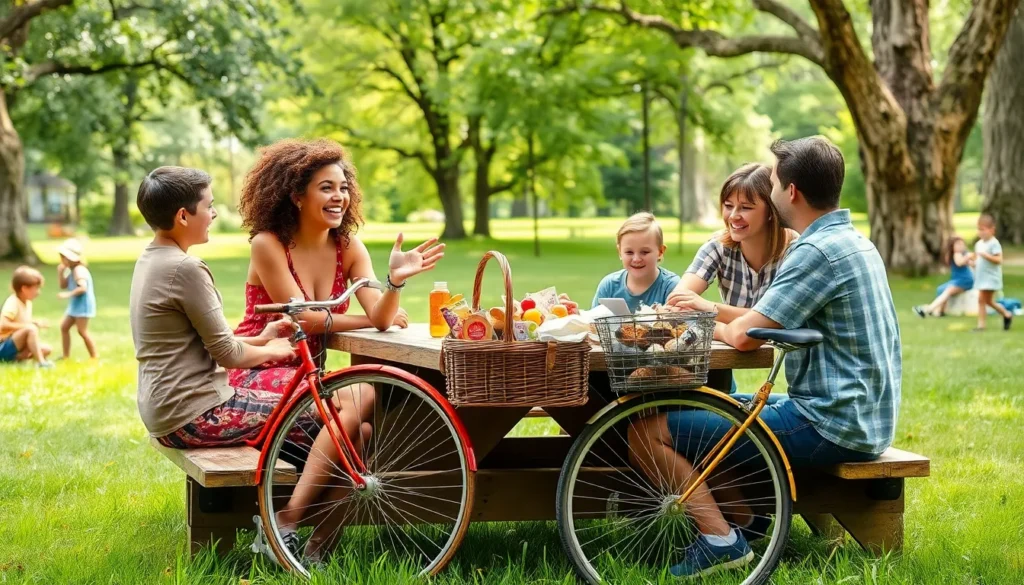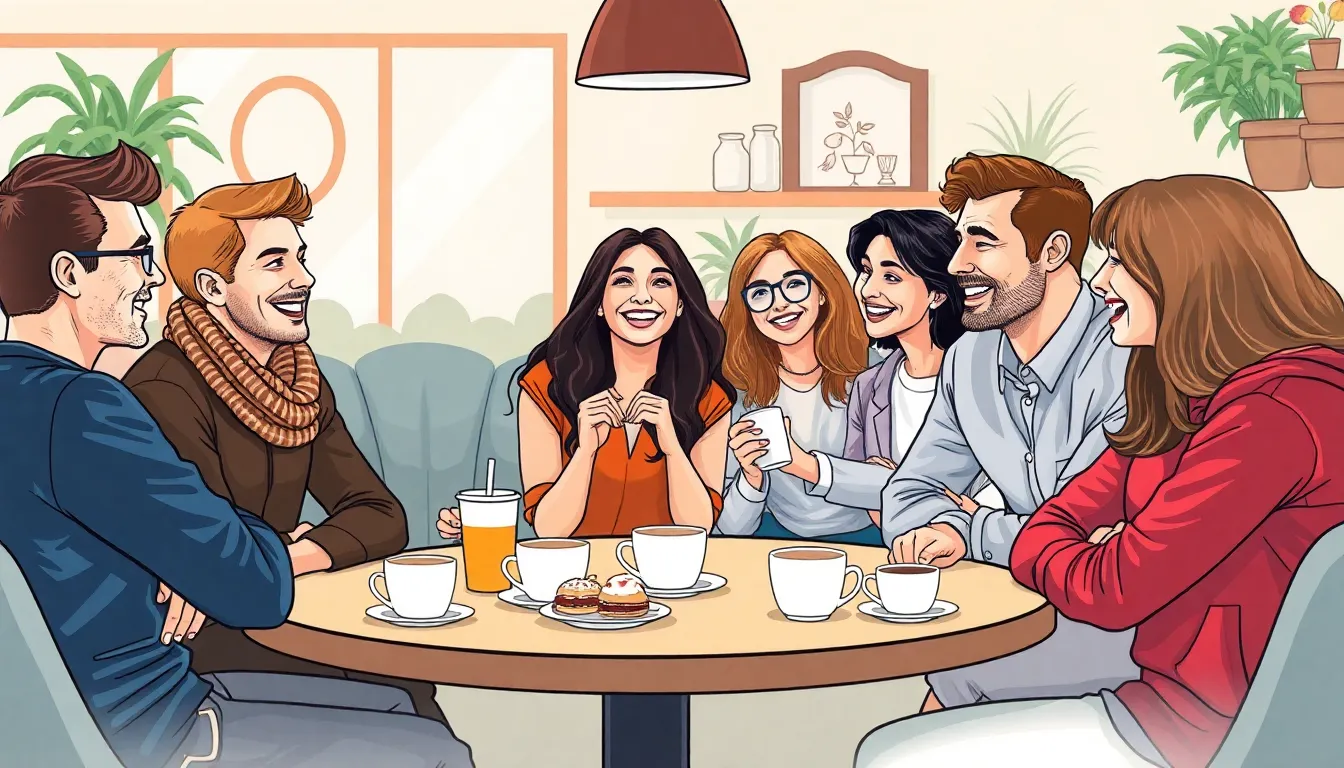
Imagine a world where the biggest drama wasn’t a Twitter feud but the latest episode of your favorite sitcom. Life before social media was like a cozy coffee shop where conversations flowed freely and people actually looked up from their phones—gasp! It was a time when sharing a moment meant actually being present, not just capturing it for the ‘Gram.
In this digital age, it’s hard to fathom a time when news spread through word of mouth instead of trending hashtags. People gathered around dinner tables, swapping stories instead of scrolling through feeds. Let’s take a nostalgic trip back to those simpler days, where life was a little less filtered and a lot more real. Buckle up for a humorous yet insightful look at life before the likes, shares, and endless scrolling took over.
Life Before Social Media
Life before social media revolved around personal interactions. People engaged in face-to-face conversations, sharing stories and laughter. Daily routines included phone calls and handwritten letters, establishing connections without screens. In communities, word-of-mouth was the primary source of information. Neighbors exchanged news over backyard fences or during casual encounters at local shops.
Hobbies thrived outside digital platforms. Reading physical books, playing board games, and enjoying outdoor activities took center stage. Families gathered for dinner, discussing their days without distractions from notifications. Entertainment often meant visiting friends or attending community events, reinforcing social bonds.
News updates relied on newspapers and television broadcasts. Many consulted local newsstands to catch up on current events. Television anchored evenings, providing a shared viewing experience among family members. Social gatherings frequently featured slideshows of printed photos, preserving memories in tangible formats.
Privacy enjoyed a different meaning during this era. Personal milestones, like birthdays and anniversaries, remained intimate, celebrated with close friends and family. Many cherished the absence of public scrutiny over private lives, enjoying moments without the pressure of social validation.
Life’s pace felt slower, allowing deeper connections to flourish. People appreciated the art of conversation, taking time to listen and engage. Experiences unfolded in real-time, capturing genuine emotions. Friendships built during this period often experienced stronger foundations, leading to lasting bonds.
Reflecting on this time evokes a sense of nostalgia for simpler connections. Personal engagement, authentic conversations, and shared experiences created a rich social fabric that seemed to center on meaningful interactions rather than status updates.
Communication Methods

Life before social media relied heavily on traditional communication methods. People engaged deeply with one another, emphasizing significant connections and genuine conversations.
Face-to-Face Interactions
Face-to-face interactions dominated daily life. Friends met at local cafés, parks, and homes, enjoying real-time conversations. Groups gathered for events, sharing experiences and laughter. People valued body language and vocal tones, fostering richer dialogues. Community gatherings often included neighborhood meetings or family celebrations, where storytelling flourished. These occasions strengthened relationships and created lasting memories.
Letters and Phone Calls
Letters and phone calls served as primary communication tools. Pen-and-paper letters conveyed personal thoughts and feelings, allowing for thoughtful expression. Individuals eagerly awaited responses, adding to the excitement of communication. Phone calls offered immediate connection, where voices could be heard and emotions could be felt. An invitation to chat felt warm and personal, contrasting sharply with today’s quick texts. Together, these methods fostered deeper connections, leaving a lasting impact on relationships.
Information Consumption
Life before social media relied on traditional media outlets for information. News traveled slowly but with a sense of authenticity.
Newspapers and Magazines
Daily newspapers provided a steady stream of local and global news. Readers often started their mornings with a cup of coffee and a paper in hand. Weekly magazines delivered in-depth articles on various topics, from politics to fashion. Families frequently shared articles, sparking conversations at dinner tables. Community bulletin boards displayed local events, keeping everyone informed. People appreciated the tactile experience of flipping through pages, engaging fully with the content. The news became a shared experience, cultivating connections and fostering debates among friends and family.
Television and Radio
Television served as a primary source of news, with nightly broadcasts capturing the day’s events. Families would gather around the TV, creating a communal viewing experience. News anchors became trusted voices, reporting headlines that influenced public opinion. Radio stations offered news updates and lively discussions, often filling the airwaves during commutes. Live coverage of significant events brought the community together, with everyone tuned in at the same time. Local stations provided regional updates, promoting awareness of nearby happenings and issues. The impact of these mediums shaped conversations, creating a collective awareness that brought people closer together.
Social Activities
Life before social media involved vibrant social activities within communities. People engaged deeply through face-to-face interactions that fostered genuine connections.
Community Engagement
Community engagement thrived through local events and gatherings. Neighbors frequently organized picnics, fairs, and clean-up days, promoting interaction and collaboration. People exchanged ideas and offered support, building trust and strengthening bonds. Local leaders often hosted town hall meetings, which allowed residents to voice concerns and share updates. Families participated in seasonal traditions, creating lasting memories together. Conversations included discussions about daily life, forming a strong sense of belonging. Without digital distraction, community ties flourished, reflecting the dynamics of real-life relationships.
Outdoor Play
Outdoor play defined leisure time for children and families alike. Kids spent hours playing games like tag, hide and seek, and baseball in parks or yards. They connected through shared experiences, developing friendships grounded in play. Families also enjoyed hiking, biking, and gardening, savoring nature’s beauty. Weekend afternoons frequently involved trips to the local pool or beach, where laughter echoed in the air. Outdoor activities encouraged creativity, imagination, and physical health, laying the groundwork for lifelong habits. Emphasis on outdoor play reinforced the importance of active, engaged childhoods, distinct from today’s screen-oriented leisure.
Personal Reflection
Life before social media fostered a different relationship with mental health. People engaged in meaningful conversations, expressing emotions face-to-face. Those interactions built strong support networks. Communities thrived on shared experiences, reducing feelings of isolation. Individuals often turned to family and friends during challenging times for comfort and advice. Mental health awareness stemmed from these direct connections, encouraging emotional resilience. Engaging in activities, like hobbies and sports, also contributed positively, allowing for balanced lives away from constant online notifications.
Privacy took on greater significance before the era of social media. Personal milestones, such as birthdays and achievements, remained intimate moments shared with close ones. Life events occurred without the concern for public perception. Individuals enjoyed a sense of security in their personal lives. Conversations and celebrations unfolded quietly, away from the eyes of the online world. Trust flourished in relationships, enabling deeper connections without the pressure of curating online images. Technology’s absence allowed for more meaningful moments, creating a protective bubble around one’s private life.
Conclusion
Life before social media offered a unique experience defined by genuine interactions and meaningful connections. People engaged in heartfelt conversations and built relationships in person, fostering a strong sense of community. The slower pace allowed for deeper bonds and cherished memories that often feel lost in today’s digital rush.
As individuals reflect on this simpler time, it becomes clear how these authentic experiences shaped their lives. The nostalgia for face-to-face connections underscores the importance of balancing modern technology with the rich, fulfilling relationships that once flourished without screens. Embracing elements of that past can inspire a return to more meaningful interactions in the present.


